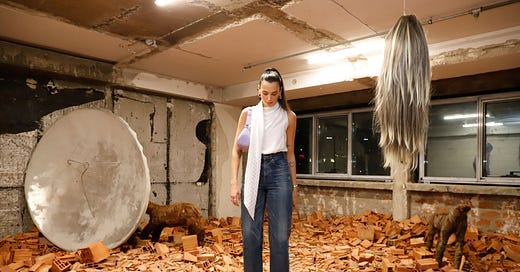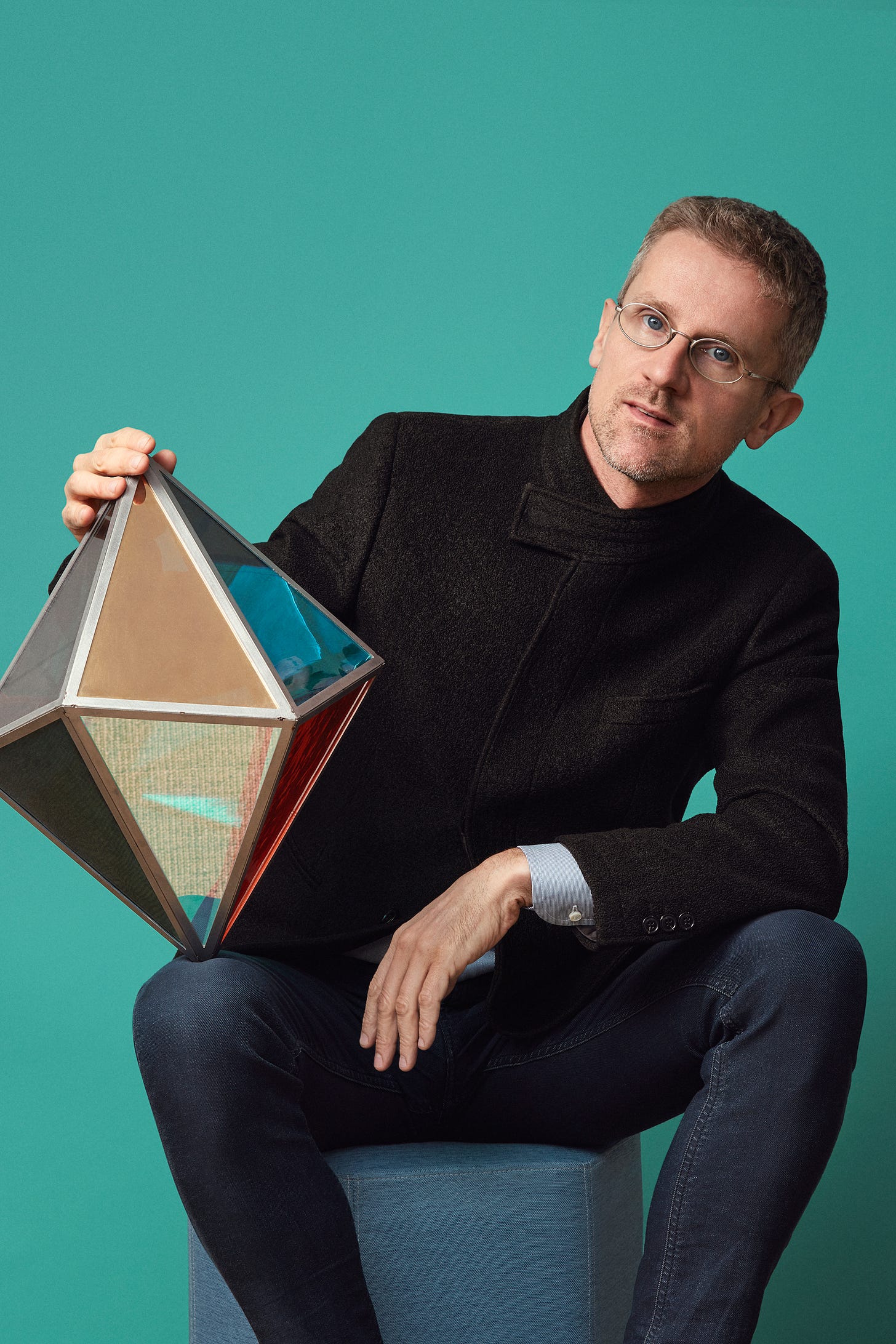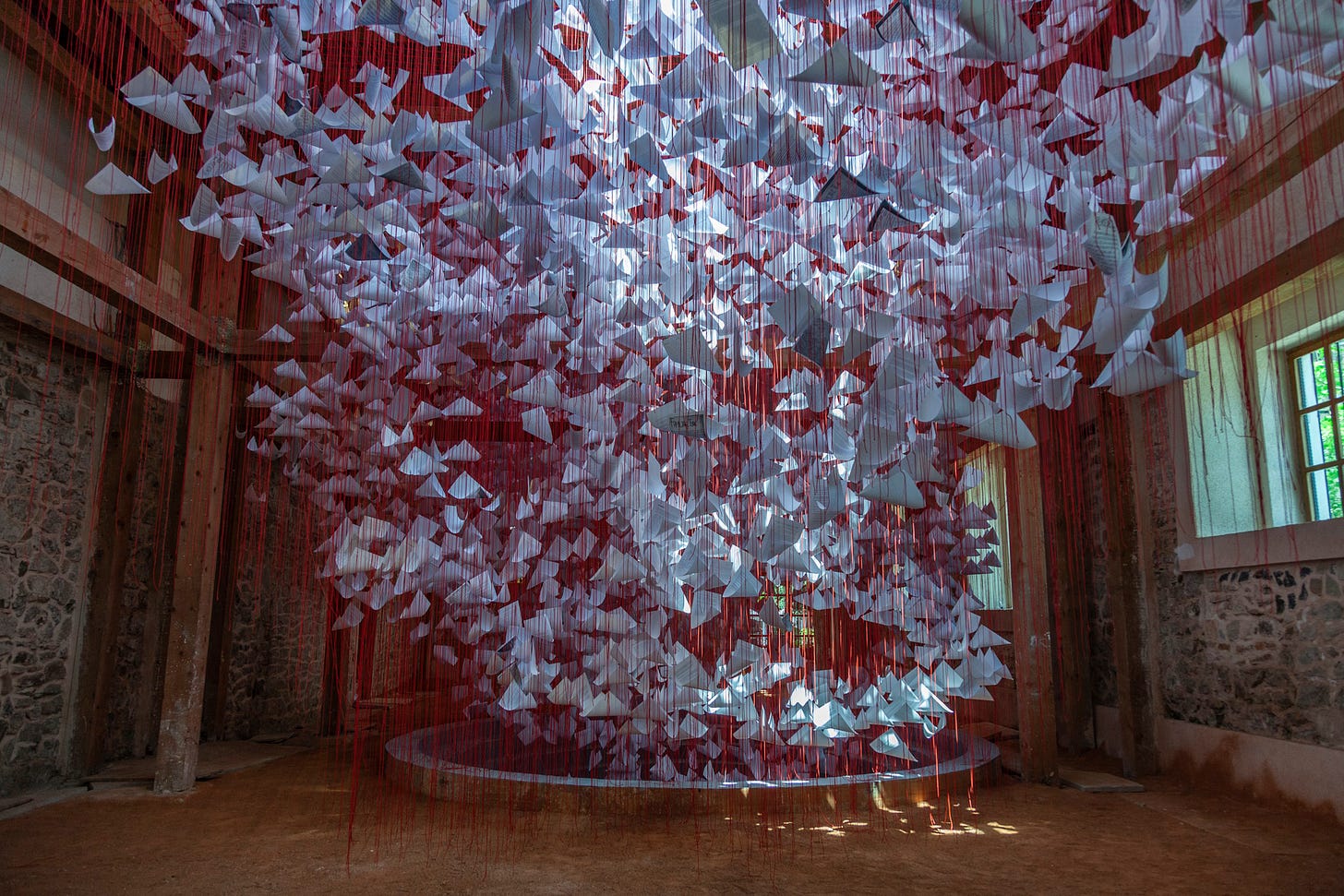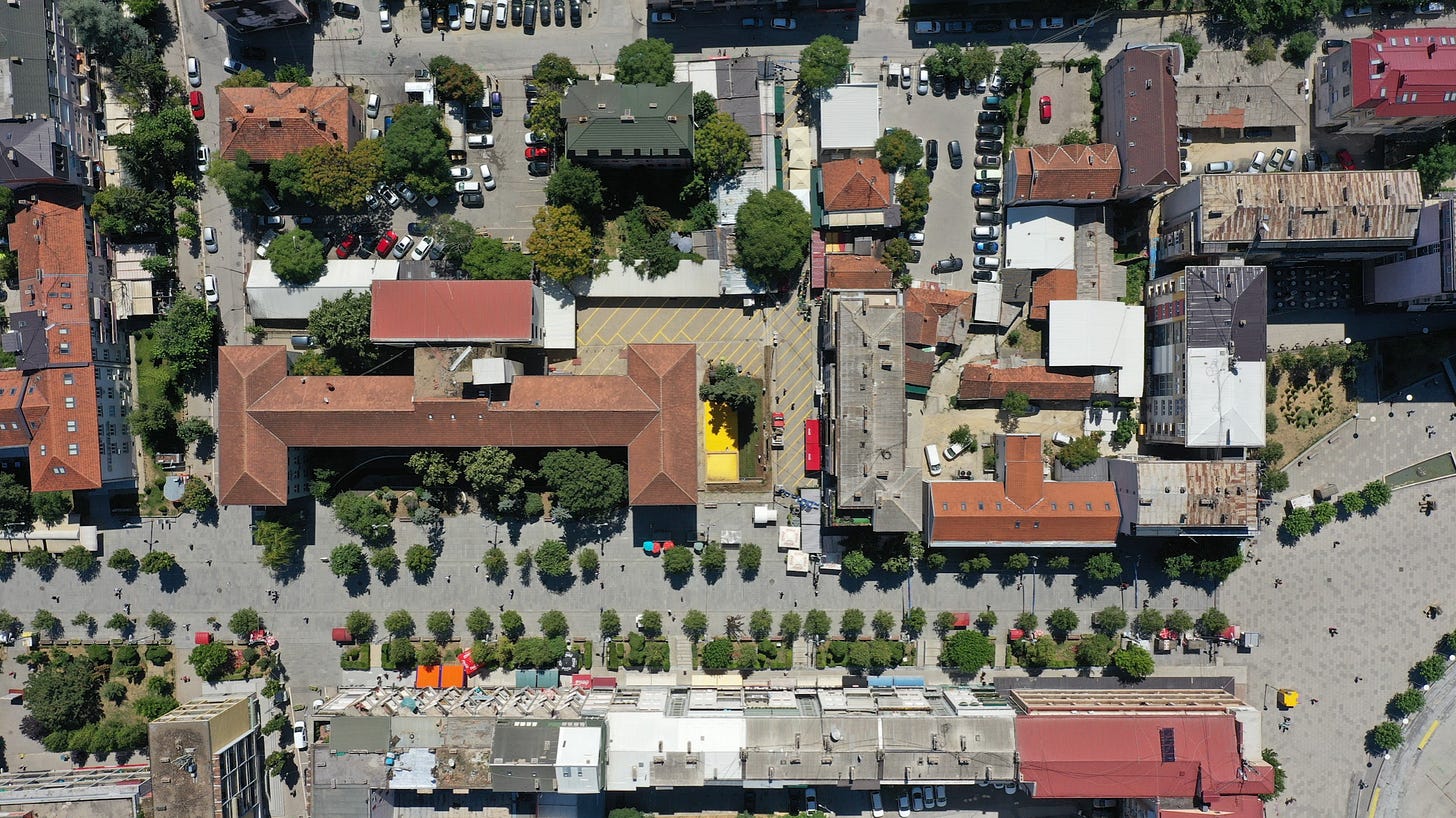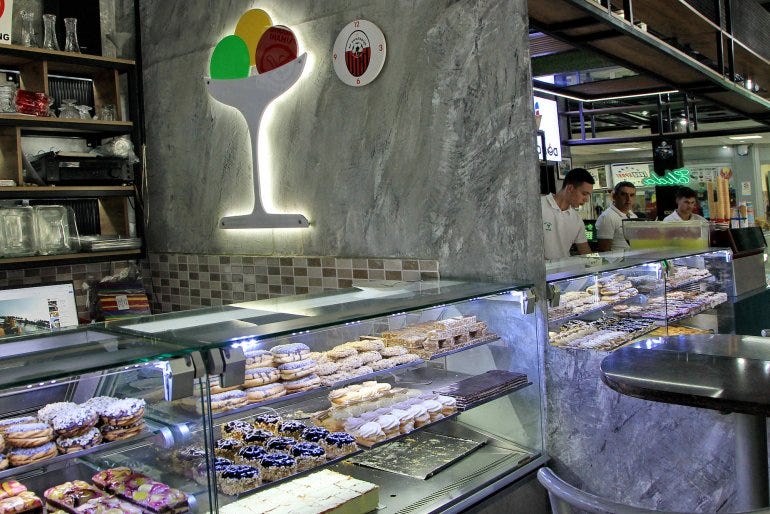S3E7. The youthful energy of Prishtina
A hundred days of Manifesta 14, the European Nomadic Biennial of Contemporary Art, in the capital of Kosovo. Architect and Creative Mediator Carlo Ratti reveals the new "Prishtina Model" that emerged
Hi,
welcome back to BarBalkans, the newsletter (and website) with blurred boundaries.
Prishtina. The youngest European capital, the city that is still looking for its identity since the end of the war in the Nineties, became the epicenter of contemporary art and urban regeneration in Europe for three and a half months.
From July 22 to October 30, the capital of Kosovo hosted Manifesta 14, the European Nomadic Biennial of Contemporary Art.
With the concept “It matters what worlds world worlds: how to tell stories otherwise”, Manifesta 14 involved artists, visitors and citizens of Prishtina in a bottom-up and empowering project of rethinking urban space.
The centrality of the Kosovar capital in the European context is clear.
The choice of Prishtina as the hosting city for the 14th edition of the Nomadic Biennial was due to the «geo-political importance of the Balkan in relation to Europe’s recent history and its future», Manifesta Foundation announced.
Even more, because of the possibility of implementing significant urban interventions: «The city of Prishtina has experienced major transformations in its landscape by unrestrained neoliberal policies of privatization of open urban spaces».
This is why «Manifesta aims to support the citizens of Kosovo in their ambition to reclaim public space and to rewrite the future of their city as an open-minded metropolis in the heart of the Balkans».
One of the two Creative Mediators of Manifesta 14, architect and urban planner Carlo Ratti, explains to BarBalkans the successes, the behind-the-scenes and the hopes for the future of Prishtina.
When the curtain falls
How would you describe Manifesta 14 in three words?
«Participatory. Transformative. Engaging».
The challenge was to connect art, architecture and civil society. Has the response from the public met expectations?
«We adopted an open and participatory approach to design the temporary interventions for the public space in Prishtina.
This means that instead of setting rigid expectations on how the users should react, we intentionally solicited their opinions on the interventions’ importance to their daily life.
Then, by choosing how to interact with these interventions - or on the contrary, by not interacting at all - people were essentially ‘voting on their feet’».
For example?
«Things played out in a particularly interesting way at the Green Corridor, the kilometer-long rail yard that we reclaimed for recreational purposes.
The individuals’ behaviors were quite diverse and sometimes unexpected. Many used the path to traverse the historically disjointed parts of the city. But some, rather amusingly, watered the plants on-site, or even took some furniture pieces away.
All such actions are vital indicators of how the public space is perceived by the people, and what can be done to improve it».
Which was the most innovative project among those selected and funded?
«The most innovative was also the simplest.
Our first urban intervention was carried out with just paint and brushes. Within 24 hours, the students from the University of Prishtina built a temporary ‘urban living room’ in front of the former Hivzi Sylejmani Library.
It made such an immediate impact: the area demarcated in yellow paint used to be crammed with illegally parked cars. The intervention replaced them with outdoor furniture, and the space became much more welcoming. Some residents recalled how lively the area was, and how the library’s courtyard was a frequent venue for basketball games.
Even more encouragingly, the project yielded long-term changes for the building to boost civic life».

The experimental spirit
To what extent the artistic and urban planning aspects intertwined?
«The two aspects were connected in a very concrete way. Many of the sites our team identified in the urban analysis ended up being converted in venues to host Manifesta’s arts exhibitions.
Other places at which we set up temporary urban interventions subsequently became permanent parts of Prishtina’s civic infrastructure.
For example, the aforementioned Hivzi Sylejmani Library has now become the Centre for Narrative Practices run by Manifesta. It is the first time the Biennale manages to establish a long-term institution in the host city post-event».
What characteristics of Kosovo did Manifesta 14 highlight?
«I would say Manifesta 14 has shed light on citizens of Prishtina with great success, specifically their willingness to adapt and improve their living space.
I am impressed by the two mayors we worked with. Shpend Ahmeti, who held office until December 2021, put forward the discourse of ‘the battle for public space’ and concretized the direction the city will take regarding its living environment.
Meanwhile, his successor Perparim Rama has promised to evolve the existing urban sphere by turning the well-received temporary interventions into permanent structures».
The average age in Prishtina is 28 and 30 in Kosovo. How did the high concentration of young people affect Manifesta 14?
«The younger demographic makeup in Prishtina injects a palpable youthful energy into Manifesta 14. In return, they will likely reap the benefits of the regenerative dynamics derived from the event.
Our participatory Urban Vision is an evolution of a trend emerged during the Covid-19 pandemic, where many municipal governments implemented innovative ideas in the city through a trial-and-error approach.
What would normally have taken years to accomplish was done in mere weeks.
The city-making process resulting from the Biennale has given younger generation in Prishtina agency to transform the city. If they can carry this experimental spirit forward, they will most likely enjoy a more vibrant urban life in the future».

“What is the city but the people?”
Manifesta 14 showed a high number of local artists from Kosovo and other Western Balkan countries. What kind of contribution did they bring to the event?
«As far as the arts section goes, the subject of identity was certainly front of mind for many local and regional artists and visitors.
Kosovar arts have suffered in the past from a lack of international visibility as many of the country’s artists are not able to travel abroad freely.
In this sense, the local artists initiated an important conversation and a process of change through their participation in the Biennale».
What kind of city is Prishtina today?
«Kosovo’s urban public space took a backseat throughout the Ottoman and Yugoslav times. Even after the country’s independence, unruly real estate expansion kicked off what is known as ‘Turbo Urbanism’, continuing to alienate citizens from the urban environment.
I think today’s Prishtina is ready to take revenge on the chaotic actions of the past, and start celebrating public space».
What does Manifesta leave behind in Kosovo, now that the Nomadic Biennial is ready to leave for Catalonia? And what can Prishtina teach to other European cities?
«Throughout the past year and a half, we have seen a new methodology of urban regeneration gestating in the heart of Kosovo.
We are quite confident that the city will carry the momentum forward and develop more accessible public space in the coming years. Some people even started calling it the ‘Prishtina Model’, with the implication that a similar logic can be adapted by other cities in the world to improve and celebrate their urban public space.
The most important lesson is universal: listen to the citizens and act on it. As Shakespeare once wrote: What is the city but the people?»
Pit stop. Sittin’ at the BarBalkans
We have reached the end of this piece of road.
In a city that changes and transforms, it is also necessary a bit of continuity with the past as well.
That is why our bar, BarBalkans, in Prishtina meets Elida pastry shop. Or rather, Elida embëltore.
Since 1977, in this place you can taste pastries - ëmbël, in Albanian - such as baklava (made with dried fruit and honey syrup), tulumba (yoghurt and starch mixture, dipped in syrup), indijanke (with cream and chocolate) or orasnica (walnut cookies).
You can also taste lemonades, Turkish coffee and boza (a malt drink made by fermenting various grains, like wheat and millet).
But most of all, this is the place to rediscover the history of Prishtina. Key national protagonists - such the first President of Kosovo, Ibrahim Rugova, and the Hollywood actor Bekim Fehmiu - used to pass by.
This was a meeting point for the Kosovar intelligentsia in the turbulent and violent Nineties, where the Democratic League of Kosovo was born. And now, it has become a heritage site, protected by the Ministry of Culture.
From here, the «youthful energy» of Prishtina can project the city into the future. While remembering the recent history, that hovers among the tables and signs of Embëltore Elida.
Let’s continue the BarBalkans journey. We will meet again in two weeks, for the 8th stop.
A big hug and have a good journey!
And don’t forget BarBalkans’ next event, on Saturday, November 26: “Poveri noi. Racconti da Bihać e dalla rotta balcanica”.
It will be something halfway between a dialogue and a concert, with Apriamo i Porti Bruxelles, the songwriter Lorenzo ‘ULULA’ Garofalo and Nicola Veronesi. Our host will be the Italian bookstore and wine shop PiolaLibri (here, for more details).
The Italian Cultural Institute in Brussels has also reported the event in its newsletter... if you understand Italian, you really can’t miss it (if you can’t make it, we will organize a recording that will be published on BarBalkans’ social media).
BarBalkans is a free newsletter. Behind these contents there is a lot of work undertaken.
If you want to help this project to improve, I kindly ask you to consider the possibility of donating. As a gift, every second Wednesday of the month you will receive a monthly article-podcast on the Yugoslav Wars, to find out what was happening in the Balkans - right in that month - 30 years ago.
You can listen to the preview of BarBalkans - Podcast on Spreaker and Spotify.
As always, I thank you for getting this far with me. Here you can find all the previous newsletters.
BarBalkans is on Instagram, Twitter, Facebook.
Pay attention! The first time you will receive the newsletter, it may go to spam, or to “Promotions Tab”, if you use Gmail. Just move it to “Inbox” and, on the top of the e-mail, flag the specific option to receive the next ones there.

